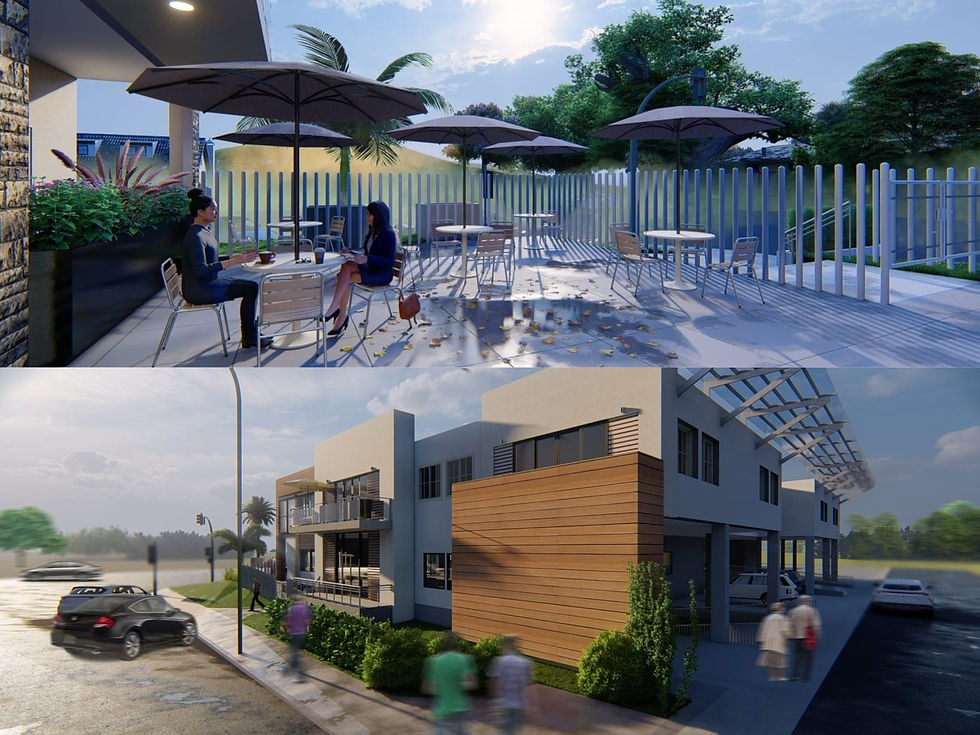The Future of Urban Design: Trends to Watch
- Tim Holt

- Sep 22
- 4 min read

Cities are alive. They breathe, they grow, and they adapt. Urban design is not just about buildings and streets—it’s about creating experiences, shaping communities, and designing spaces that inspire people every single day. At Kuhlman Scott Architects, we believe the future of our cities will be defined by bold ideas, sustainable choices, and human-centered design.
As an architecture firm in San Diego with a passion for innovation, we’re constantly asking: What’s next? What trends will reshape skylines, redefine how we interact with our environments, and set the stage for the next generation of urban living? Here’s what we see on the horizon.
1. Designing for Human Connection
At its core, urban design is about people—not just structures. The future of city architecture will focus on bringing humans closer together, even in the densest environments. Picture plazas designed for community gatherings, sidewalks that double as social spaces, and parks seamlessly woven into commercial districts.
With architectural design services grounded in human experience, architects are creating environments that encourage connection. A bench isn’t just a bench—it’s an invitation to pause, to meet, to share. A building’s lobby isn’t just an entryway—it’s a gathering place, a hub of energy.
The future belongs to spaces that foster community in every brick and beam.
2. Sustainability as the Standard
Gone are the days when “green design” was just a buzzword. Today, sustainability is no longer optional—it’s essential. And tomorrow? It will be the very foundation of urban design.
Expect to see:
Living buildings with rooftop gardens and vertical forests.
Net-zero energy projects powered entirely by renewable sources.
Materials of the future—recycled, reclaimed, and reimagined.
As climate challenges grow, architects have the responsibility—and the opportunity—to lead the charge. Our work in commercial architecture services is increasingly focused on designs that reduce energy consumption, conserve water, and protect natural ecosystems while still dazzling the eye. Sustainability will not mean compromise; it will mean possibility.
3. Adaptive Reuse: Breathing New Life into Old Spaces
One of the most thrilling trends we’re seeing is adaptive reuse. Rather than tearing down, architects are transforming. Old warehouses become vibrant co-working spaces. Former factories turn into sleek loft apartments. Historic landmarks find new life as cultural hubs.
This approach not only preserves a city’s character but also reduces waste and construction impact. For urban designers, adaptive reuse is where creativity truly shines—it’s about honoring the past while designing for the future.
In San Diego, where history and modernity meet at every corner, adaptive reuse has become a powerful tool for both commercial and community growth.
4. Smart Cities: Technology Meets Architecture
The cities of tomorrow will be intelligent, responsive, and alive with data. From smart lighting systems that adjust to pedestrian flow, to buildings that monitor and optimize their own energy usage, technology will be embedded in the DNA of urban design.
But this isn’t about cold, sterile efficiency. Done well, smart city design makes life warmer, safer, and easier. Imagine streets that light up as you walk, buildings that adjust temperature to reduce emissions, or transit systems that seamlessly respond to commuter needs.
At our architecture firm in San Diego, we see technology as a bridge—not a barrier—to human connection. The challenge is to blend innovation with artistry, making tech invisible but indispensable.
5. Blurring the Lines Between Indoors and Outdoors
In a city blessed with sunshine like San Diego, it’s no surprise that the line between indoors and outdoors continues to dissolve. Expect to see more:
Retractable walls that merge office interiors with fresh air.
Courtyards tucked inside high-rises.
Outdoor terraces that double as work and social spaces.
This isn’t just about beauty—it’s about health. Natural light, airflow, and greenery improve mental well-being, creativity, and productivity. As architectural design services evolve, creating spaces that feel alive with nature will become a hallmark of great design.
6. Equity and Accessibility in Design
The future of urban design must also be inclusive. Spaces that welcome every body, every culture, and every background are essential for thriving cities. Architecture has the power to break down barriers—literally and figuratively.
From universal design features that ensure accessibility, to public spaces that celebrate cultural diversity, architects are reimagining cities as places where everyone belongs.
This trend isn’t just ethical—it’s inspirational. A city designed for inclusivity pulses with energy, creativity, and connection.
7. Iconic Aesthetics with Purpose
Finally, the skyline itself will continue to evolve. Future cities will be filled with iconic structures—buildings that turn heads, spark wonder, and become landmarks. But these won’t be monuments to ego; they’ll be monuments to purpose.
Artistry will merge with function. Commercial towers will double as green energy producers. Public buildings will become cultural icons. Each design will tell a story—not just of what the building is, but of what the city stands for.
Final Thoughts
The future of urban design is vibrant, human-centered, and alive with possibility. It’s about connection, sustainability, adaptability, and artistry. It’s about cities that don’t just exist, but thrive.
At Kuhlman Scott Architects, we’re proud to be part of this movement. Through our commercial architecture services and full range of architectural design services, we help bring these visionary ideas to life—right here in San Diego and beyond.
The skyline of tomorrow is being drawn today. And if you ask us, it’s going to be breathtaking.




Comments